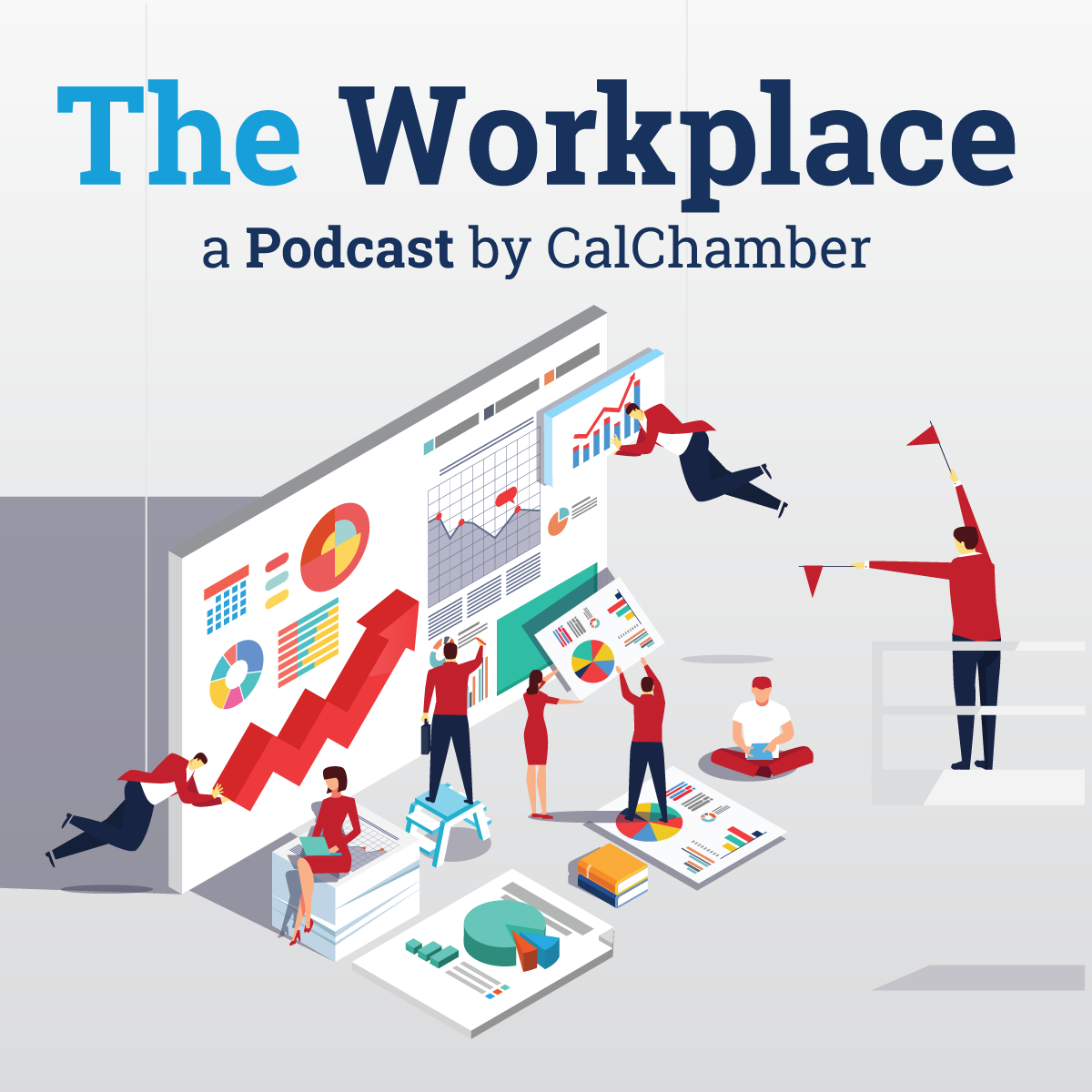 In Episode 212 of The Workplace podcast, CalChamber Labor and Employment General Counsel Bianca Saad and CalChamber Associate General Counsel Matthew Roberts discuss the wildfire-related regulations and best practices employers should know.
In Episode 212 of The Workplace podcast, CalChamber Labor and Employment General Counsel Bianca Saad and CalChamber Associate General Counsel Matthew Roberts discuss the wildfire-related regulations and best practices employers should know.
The Los Angeles region is currently dealing with one of the most destructive wildfire disasters in California’s history. As wildfires continue to affect communities across the state, employers should stay informed about regulations and best practices to protect workers during these emergencies.
Air Quality Regulation
Employers whose workplaces may be affected by air quality, such as wildfire smoke, should be aware of California’s outdoor smoke regulations, Saad says.
The regulations exclude workers who work in a completely enclosed building or vehicle with mechanical ventilation, and windows and doors that are kept shut, except to enter and exit that building/vehicle.
Also excluded are workers exposed to wildfire smoke for a cumulative period of time that’s shorter than one hour during their shift, of if the worker is a firefighter who is fighting the wildfire.
Outside of these exemptions, Saad explains, the regulation is broad enough to cover work sites that may feel like they are indoors, but because the doors are consistently open, such as retail establishments, many are still going to be covered.
Employers covered by this regulation must monitor the Air Quality Index (AQI). If the AQI for particulate matter (PM 2.5) rises to 151 or above, employers must take engineering and administrative steps to reduce exposure. This may include moving workers indoors to filtered buildings or relocating them to areas with better air quality. Employers may also offer respirators, such as N95 masks, for voluntary use.
For PM 2.5 levels above 500, the use of respirators like N95 masks becomes mandatory, with employers responsible for ensuring proper fit and worker health.
Employers can access air quality information through the Environment Protection Agency’s (EPA) AirNow tool, which provides real-time data on regional air quality conditions, Roberts says.
A key point to keep in mind is that this air quality regulation is permanent, not just an emergency measure, and is crucial as California faces frequent wildfire seasons, Roberts says.
Wage and Hour Considerations
Wage laws are another critical issue during wildfire events.
Non-Exempt Employees
Non-exempt employees are paid only for the hours actually worked, Saad explains. If work is not available for these employees, then an employer generally does not have to pay them. California’s reporting time pay rule states that if an employer fails to put them to work on an already-scheduled shift, or they’re given less than half the hours for which they were scheduled, the employer needs to pay half their shift, which can be up to four hours total paid at their regular rate of compensation.
There are, however, exceptions to this rule, including if the reason that no work is available pertains to acts of God, such as wildfires or recommendations from a civil authority to cease operations. In these situations, the reporting time pay rule doesn’t apply, Saad says.
California doesn’t have a statewide predictable scheduling law, giving employers the ability to eliminate shifts or modify future schedules at will without any specific amount of notice. There are some industry-specific predictive scheduling ordinances, including within the Los Angeles city limits. These ordinances, however, don’t apply when operations are affected under circumstances such as these.
Exempt Employees
If exempt employees perform any work in a workweek and they’re ready, willing and able to perform that work throughout the week, they will be paid their entire salary, even if the reason they are not being put to work for the entire week is due to an employer’s closing operations due to the wildfires, Saad explains.
If operations remain shut for an entire workweek and that exempt employee performs absolutely no work during that week, even if they are ready, willing and able, then, in that situation, an employer can deduct that week’s salary.
Exempt and non-exempt employees who experience lost wages due to wildfires may file claims with the California Employment Development Department (EDD) for unemployment benefits, which are available without the usual waiting period during emergencies.
Paid Time Off, Emergency Leave
Rules regarding vacation banks are based on what an employer’s policies and practices are. Importantly, employers should ensure that policies are enforced uniformly.
“In other words, if we are going to deny vacation use for wildfires to one employee, then we should be doing so across the board for any employees under similar circumstances,” Saad stresses.
Paid sick leave is strictly governed by California law and there are strict requirements. On January 1, 2025, a new law went into effect that expressly allows agricultural workers to use their paid sick leave bank when their work sites are closed during emergency proclamations related to wildfires, heat or flooding.
Beyond that, paid sick leave also allows use for any circumstance where the employee is taking the time off to prevent an injury or illness for themselves or for a qualifying family member, as well as to treat and recover from an existing injury or illness.
Wildfire conditions can lead to or exacerbate medical conditions, which means paid sick leave usage could be appropriate during closures to protect the health of the employee or a qualifying family member.
Lastly, Saad points out that some schools and licensed daycare centers may close during wildfire conditions. So, if an employee has a child in a school or a daycare that has closed unexpectedly, that employee may utilize up to 40 hours of job-protected school activities leave. This leave is unpaid and is available if the employee works at a worksite with 25 or more employees.
Communication, Required Notices
While there is no general notice that is required in these circumstances to employees across the board, there are some specific communication requirements and practices that employers should be aware of, Saad says.
For example, employers covered by wildfire smoke rules need to communicate those rules to their employees when conditions warrant notification of changing administrative controls.
Another requirement is that employers notify newly hired nonexempt employees of a state or a federal emergency proclamation in their county that may affect their health and safety through the required Labor Code Section 2810.5 Notice to Employee.
Lastly, Saad explains that even if a specific notice isn’t required, employers should have open and prompt communications with employees to help ensure operations are remaining stable and to facilitate communications when it’s time to resume operations.
Resources
The CalChamber has put together a free, public resource page with the latest information on resources that may be useful for businesses affected by the state’s wildfires.
Visit www.calchamber.com/wildfires for more information.

